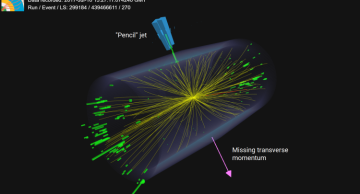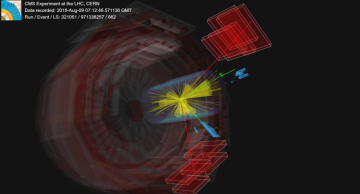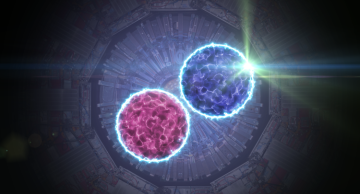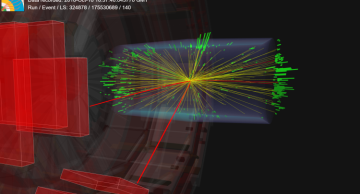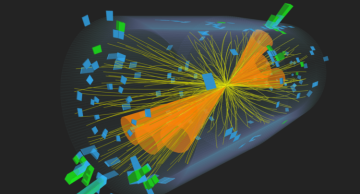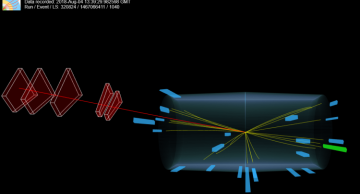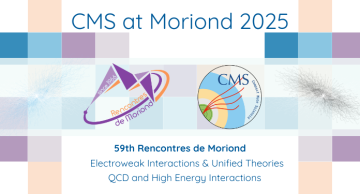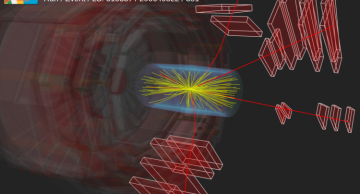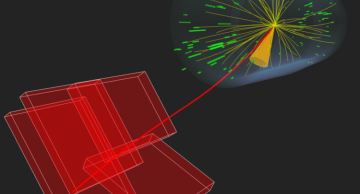The CMS experiment conducts the first search for dark matter particles produced in association with an energetic narrow jet—the pencil jet.
Dark matter remains one of physics’ greatest mysteries. Despite making up about 27% of the universe’s…
In a recent measurement, the CMS experiment confirms a slight but persistent disagreement between the simulated and the observed rates of events in which a top quark pair is produced accompanied by a W boson.
One of the goals of the CMS…
The CMS experiment has conducted a comprehensive study of the rates of production of top quark pairs created along with a photon, both inclusively and as a function of several kinematic variables.
As the heaviest fundamental particle, the top…
The CMS experiment studies the Higgs boson as a potential window into dark matter, and sets constraints on this mechanism, which gives rise to isotropic sprays of low-energy particles.
Quantum chromodynamics (QCD) describes the strong…
The CMS experiment has conducted a search for heavy beyond-standard-model particles (referred to as a Z′ boson) that give rise to a top quark-antiquark pair decaying into hadrons. The search excludes the existence of the new Z′ boson with…
The ratios of the B meson production fractions have been measured for the first time in the CMS experiment.
B mesons are composite particles consisting of a bottom antiquark and another type of quark, such as an up, down, or strange quark,…
The CMS Collaboration announces 50 new results for Moriond 2025.
In Higgs physics, following a comprehensive research program aimed at characterizing the Higgs boson by measuring its properties and interactions across various decay and…
CMS discovers associated production of a Z boson and an ϒ meson.
At the CMS experiment, we have observed for the first time an exceptionally rare process: the associated production of a Z boson with an ϒ(1S) meson, the lightest bound state of…
CMS sees evidence of the Upsilon meson decaying into two tau leptons for the first time at a hadron collider
Beyond our best current understanding of particle physics, encapsulated in the standard model, various theoretical models predict the…
Pagination
- Previous page
- Page 1
- Current page 2
- Next page

